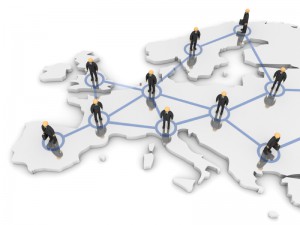On 11 September 2013 the European Commission adopted a legislative proposal for a “Connected Continent: Building a Telecoms Single Market” aimed at building a connected, competitive continent and enabling sustainable digital jobs and industries.
According to the Commission, while successive waves of reform by the European Union have helped transform the way telecoms services are delivered in the European Union, the sector still operates largely on the basis of 28 national marketsdespite telecom services can nevertheless be delivered across networks and borders. The fact is that as of today there is no telecoms company providing services across the whole EU, and the European Commission considers this as a failure of the internal market. Therefore the Commission wants to create a framework that enables both operators and customers to behave as if the European Union were a single telecommunications market, where services can be sold and bought regardless of the location and where crossing national borders would have no price effect for consumers. With this particular vision of the European Commission on the telecom single market a legislative package was the adopted that includes the following measures:
- Simplifying EU Authorisation procedures for telecoms operators
- Pushing roaming “premiums” out of the market
- Abolishing “premiums” for international phone calls within Europe
- Legal protection for open internet (net neutrality)
- New consumer rights, with all rights harmonized across Europe
- Coordinated spectrum assignment
- Simpler rules to help companies invest more and expand across borders
During his State of the Union speech, Jose Manuel Barroso said that “further substantial progress towards a European single market for telecoms is essential for Europe’s strategic interests and economic progress. For the telecoms sector itself and for citizens who are frustrated that they do not have full and fair access to internet and mobile services.”
On her side, Vice President Neelie Kroes, the Digital Agenda Commissioner responsible for the package, noted that the legislation proposed “is great news for the future of mobile and internet in Europe. The European Commission says no to roaming premiums, yes to net neutrality, yes to investment, yes to new jobs. Fixing the telecoms sector is no longer about this one sector but about supporting the sustainable development of all sectors.”
Telefónica takes the view that the EU markets should evolve towards a more efficient market structure as well as that more can be done to improve investment climate in the EU. Where market evolution should be heading is however something the market should be given the say within a regulatory framework that ensures simpler and more harmonized rules across the EU. The Communication presented by the Commission on the 11th of September correctly identifies a number of key areas that have been left behind in this discussion and should addressed in this context, in particular the need for market restructuring, consolidation, the level playing field among all actors of the ICT value chain and the need for further steps to relieve regulatory pressure. These are cornerstones to provide the necessary room for that market-led evolution and for Europe to achieve the competitiveness objective while ensuring investment in new networks is encouraged.
And so far, so good. Now it is time for the European Institutions to engage in this essential debate which at the end of the day is about deciding whether these proposals are sufficient to address EU future competitiveness or whether other arrangements should be thought to ensure that aim.









